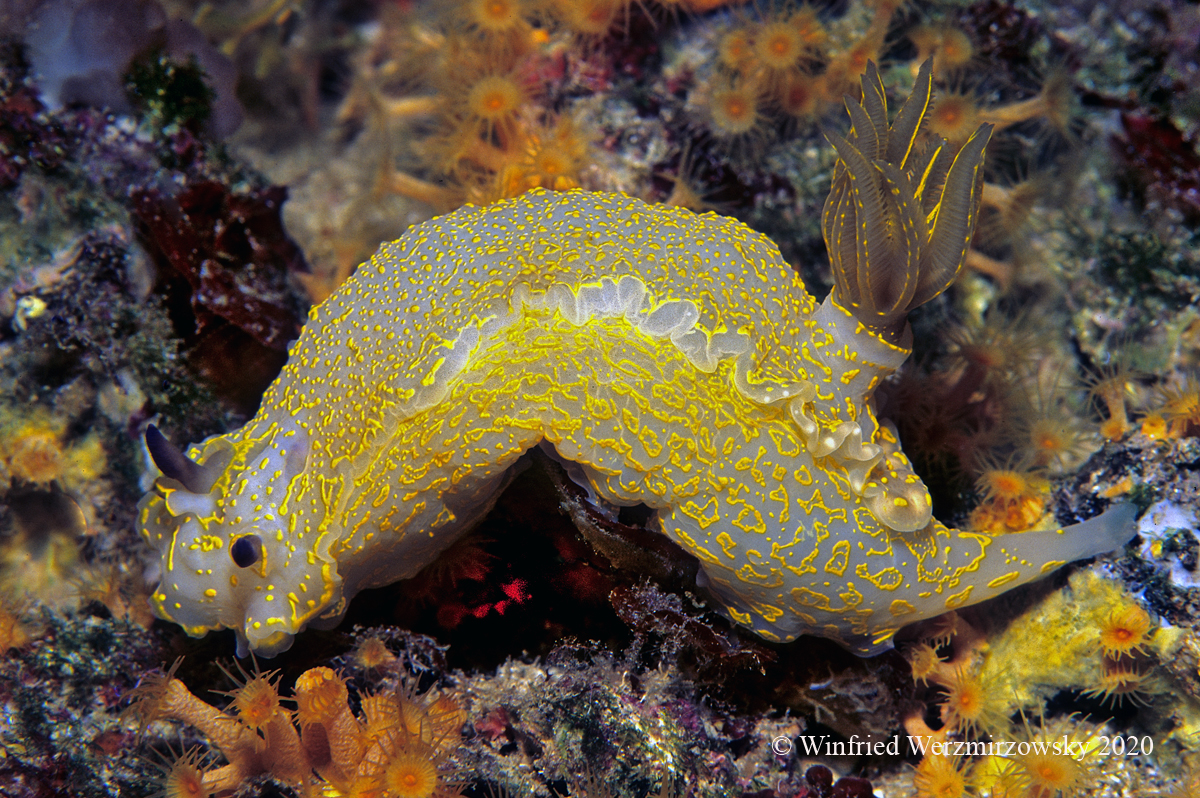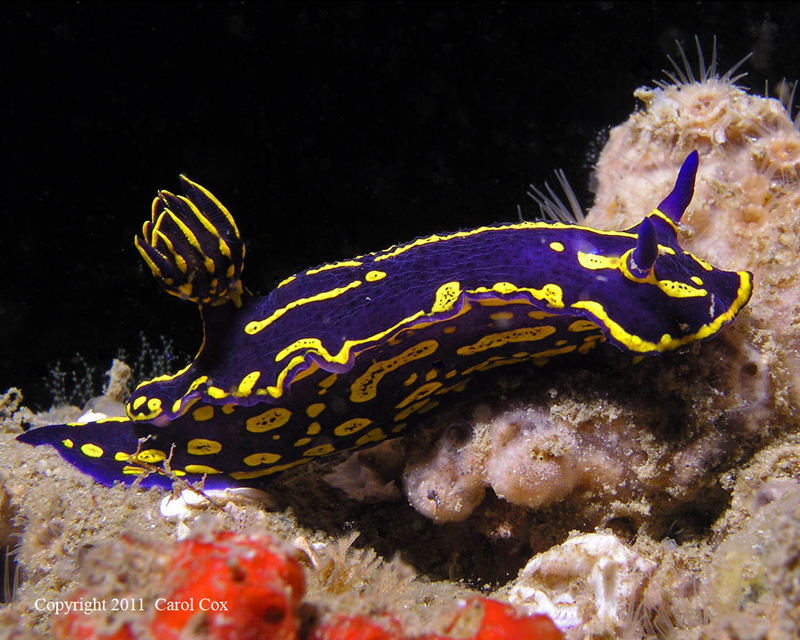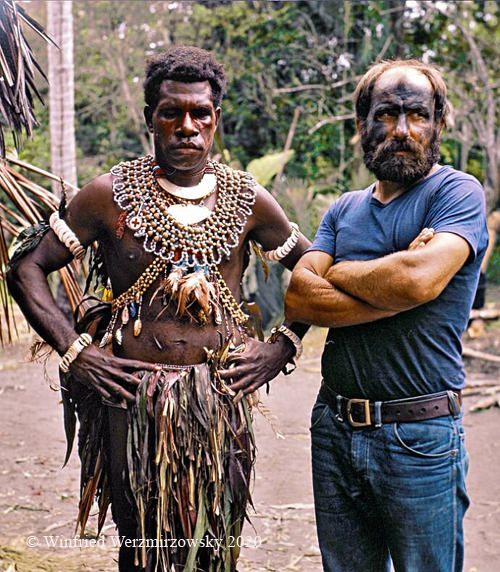 |
Image courtesy of Winfreid Werzmirzowsky
Ibiza Island, Spain
Nikon RS
 |
Felimare (=Hypselodoris) picta (Schultz in Philippi, 1836)
I am not a big fan of subspecies, and rarely ever use them. What we used to call, Hypselodoris picta (Courtesy of Bill Rudman's Sea Slug Forum) and its family of subspecies are exactly why. This species is incredibly variable in color, and are even known to change color as they grow from juvenile to adult. To make matters worse, at least two 'subspecies', Hypselodoris picta picta and Hypselodoris picta webbi have wide sympatric distributions on either side of the tropical Atlantic which is not what one would expect from subspecies. The original six suggested subspecies are: Hypselodoris picta picta(Schultz, 1836) known from both sides of the Atlantic; Hypselodoris picta webbi (d'Orbigny, 1839), also known from both sides of the Atlantic; Hypselodoris picta azorica Ortea, Valdes & Garcia-Gomez, 1996, known from the Azores; Hypselodoris picta tema Edmunds, 1981, known from West Africa; Hypselodoris picta verdensis Ortea, Valdes & Garcia-Gomez, 1996, known from the Cape Verde Archipelago; and Hypselodoris picta lajensis Troncoso, Garcia & Urgorri (1998) known from Brazil. And now we have another from Brazil Hypselodoris juliae DaCosta, Padula & Schrodl, 2010. All have yellow lines and spots and dark blue rhinophores and gill. But that is where the similarities end. The distribution and size of the yellow lines and spots can be observed a hundred or more different ways. Personally I cannot tell them apart. Hopefully the specimens included here demonstrate this point. White acidic secreting defense glands can be seen along the edge of the mantle (just below the gill) in Winfried's photo above." The ability of this species complex to cross different biogeographic barriers and reside on both sides of the Atlantic has been the subject of numerous papers. All I can say is - "Good luck divers." Dave Behrens Sammamish, WA 98074 Nov., 2020 Send Dave email at davidwbehrens@gmail.com |
Tom Maher Reef, Mexico Beach, FL in 95 ft. of water
Olympus C5050 in an Ikelite housing with one DS-125 strobe
Copyright 2011, Carol Cox
Winfried Werzmirzowsky and friend
PNG Highlands
Getting ready for costume party?
Date Unknown

Webmaster's Notes: I first met Winfried many years ago back at Dive Paradise, Tulamben, Bali, Indonesia when we had adjoining rooms. Being somewhat in awe of his orderly arrangement of cameras and dive equipment, I was at first hesitant to strike up a conversation of in view of my less than organized gear strewn about my room. Perfect odd couple I though until my buddy Jerry Allen introduced us and I never looked back! Winfried's underwater photographic zeal is best exemplified by an incident on a succeeding trip to Bali. His Nikon RS teleconverter failed and he decided to go back to Germany to have it repaired. What a shame I said, to abort a trip over a part failure! Winfried replied, "who's aborting, I will be back in a few days." Sure enough he reappeared in four days with a repaired teleconverter. At that time there was only two technicians in the world who would work on RS cameras and one of them resided in Germany, so that's where Winfreid headed! Being a retired Lufthansa pilot certainly facilitated his journey, but it still required a lot of fortitude and dedication on his part. So, when invited to visit him in Germany and see his images of Indonesia, I grabbed the wife and we took off to Germany in April of 2004. Who would of though we would fly half way around the world to see underwater images?? Well, it was certainly worth it! Winfried's images have appeared in several publications, the one that presently comes to mind is "Crustacea-Guide of the World" by Helmut Debelius. What more can be said, Winfried is a first rate underwater photographer! Winfried's most memorable dive: The liberty wreck at Tulamben, Bali, Indonesia at midnight! Just him and the ship residents and a starlit sky above! Almost transcendental! And also a world class trekker as can be seen in the photograph at left! Just hope there isn't a boiling pot of water nearby! Not sure what is going on! The most difficult aspect of getting to know Winfreid for me was pronouncing his last name! I eventually gave up! To me he has always been and will be Winfreid! I count myself very fortunate in this lifetime to have made his acquaintance!
Send Winfreid email at Winfried Werzmirzowsky
|

Attention all you Sluggers, and you know who you are! The NSSI 2nd edition is now available in ebook PDF and book form . The hard back version will become available Nov. 1st. Both will cost $65 (individually). You will need to jump through a few hoops to get the electronic version as pdf distribution is protected by Adobe ID!! Please read the following to enable reading your electronic purchase! This new 2nd Edition is updated and reorganized, including 185 new species. Among other features, the new edition includes additional photographs of species, an identification key, and an up-to-date classification reflecting the latest evolutionary relationships. The Indo-Pacific represents the largest expanse of tropical ocean in the world, stretching from the Indian Ocean coast of southern Africa and the Red Sea to the central Pacific of the Hawaiian Islands, Easter Island and the Marquesas. This region supports the most diverse marine fauna of any place in the world for most groups of marine organisms. The nudibranchs and sea slugs are no exception to this rule; there are about 3,000 described species of these organisms in the world and at least 40% of these have been found exclusively in the Indo-Pacific tropics. This book illustrates 2,138 Indo-Pacific nudibranchs and sea slugs, including many undescribed species.
|

|
